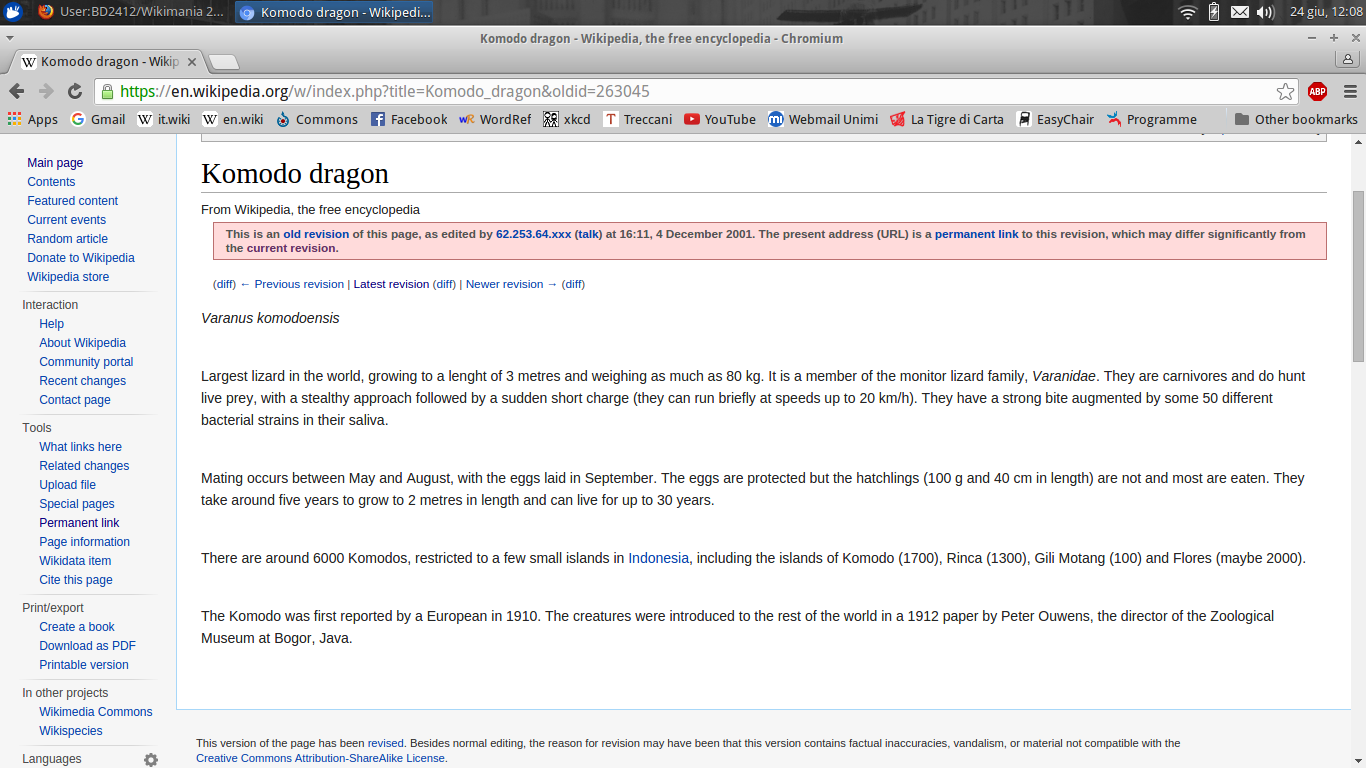User:BD2412/Wikimania 2016 presentation

Why should Wikimedia go to the movies?[edit]

- There are many ways for Wikimedia to branch out with new offerings to new audiences:
- Physical brick and mortar locations in major cities
- QR codes on monuments that visitors can scan to instantly be taken to that page
- 3-D printer files posted on Commons, allowing users to physically print examples of objects
- Livestream and video cameras set up on famous thoroughfares or on sights like the tiger exhibit at the Smithsonian zoo
However, the greatest opportunity to expand our reach and extend our dissemination of information is through audiovisual content. Wikimedia must go to the movies.
- When I say "go to the movies" I mean:
Provide high-quality audiovisual documentary content, comparable to a Discovery Channel or History Channel show - not necessarily with the level of image quality that might be found in a movie shown in a theater, but not exclusive of that possibility, either.
-
-
-
-
Reason 1: To make knowledge available to people who are best able to obtain knowledge through audiovisual media[edit]

-
-
-
-
-
Audiovisual presentations speak to the illiterate[edit]

-
-
-
-
-
Audiovisual presentations can overcome language barriers[edit]

-
-
-
-
-
Technology is increasingly heading towards more and more convenient audiovisual platforms[edit]
- How many people in this room have a device on which they can watch audiovisual content?

-
-
-
-
-
Reason 2: To attract new participants and contributors[edit]
- Wikimedia has millions of editors who are primarily contributing text and print.
- Some people who would prefer to convey their knowledge through audiovisual media.
- There are already hundreds of thousands of people in the world who are making amateur documentaries and uploading them to websites like YouTube.
Making movies is sexy[edit]

Making movies is becoming easier[edit]
- How many people in this room have a device on which they can record audiovisual content?

It's the same device!
As the quality of audiovisual recording on mobile devices continues to improve, we are already reaching the point where film-quality video will be available in the individual mobile device. In fact, a company called Light is already offering a cellphone-sized digital camera with 16 apertures of various focal lengths which uses ten of these at a time to create a composite film-quality image. This currently costs about $1,800, but the price will drop significantly as the technology advances.
Of course, many potential contributors also have their own high-quality video recording equipment.
-
-
-
-
-
How does Wikimedia go to the movies[edit]

What are the elements of Wikimedia going to the movies?
1. A platform[edit]
- An editable platform will be needed, where audio and video clips can be uploaded individually, and edited together, along with other video elements such as transitions between scenes.
- Remember that all of our text ultimately resolves to ones and zeros; audio and video are the same, except that there are more of them.

-
-
-
-
-
There are, of course, many different video editors (Mozilla had been working at one point (and may still be) on an online collaborative audiovideo editor under the name Popcorn Maker).
-
-
-
-
-
2. Audiovisual content[edit]
New raw footage of subjects of encyclopedic importance created by Wikimedians[edit]
For example, here is a brief documentary I have created on the Komodo Dragon:
in all different languages, and allow the viewer to pick their language.
Okay, that is not really a documentary on the Komodo Dragon, but this is not really an encyclopedia article on the Komodo Dragon:

-
-
-
-
-
Of course, we an also capture raw footage for human events:
-
-
-
-
-
- (this waterfall is about a four hour drive west from Esino Lario)
-
-
-
-
-
Existing public domain footage of subjects[edit]
Remember that many of our text articles on historical figures and basic science topics began with public domain text.
-
-
-
-
-
-
-
-
-
-
-
-
-
Scientific and historic animations[edit]
-
-
-
-
-
-
-
-
-
-

-
-
-
-
-
Interviews with subject matter experts[edit]
- We use publications by experts in the field as reliable sources of information included in articles.
- Those experts, however, are real people with physical locations, and often with university affiliations.
- Everywhere that these experts can be found, Wikimedians can also be found.
- We can train interested Wikimedians to conduct useful interviews:
- Ask the right questions to obtain useful content.
- Use the right filming techniques to capture the dialogue.
-
-
-
-
-
Dramatic recreations/reenactments[edit]
-
-
-
-
-
Other elements[edit]
- Background music and video effects such as transitions
- For more ideas, check out Category:Videos by technique
-
-
-
-
-
How do we select topics?[edit]
- We don't, any more than we do with encyclopedia articles.

-
-
-
-
-
Conclusion[edit]
Let's see Wikimedia win an Academy Award for Best Documentary, for a collaboratively produced project.